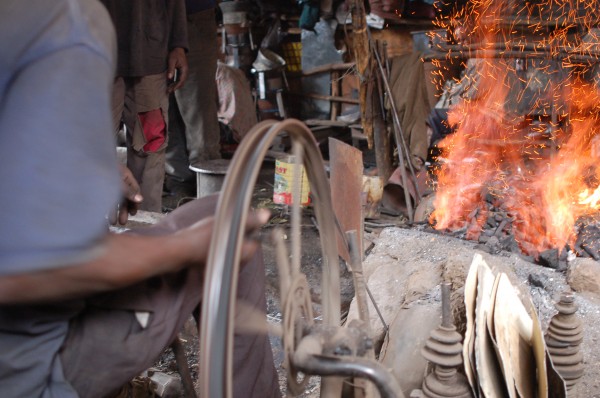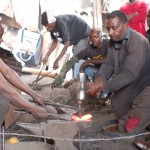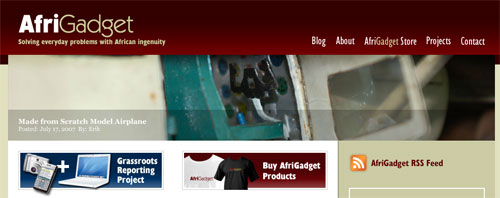Gikomba is a part of Nairobi that is well known for metal working. I had been meaning to come this way for a while, and today afforded me the perfect opportunity to drop down into Gikomba and see what kind of enterprising activities Kenyans were up to.
I ran into a George Odhiambo, a bulk fabricator of everything from wheelbarrows to chisels. The chisels caught my eye, primarily because one of them looked a lot like a shaft straight out of a Land Rover. It turns out that they reuse multiple types of iron for their goods, including leftover pieces from old vehicles. Nothing goes to waste here.
Even more interesting to me (probably because it moved and did stuff with fire), was the bicycle-turned-to-bellows that kept the fire going that would heat the metal rods. It’s a fairly simple, yet ingenious contraption that utilizes old materials with a little bit of engineering. The thing runs all day, every day too, so it’s made to last.
The chisel pictured below is a stone chisel, used in quarrying and squaring stones in the quarry’s dotting the country (most houses in Kenya are stone). They cost about 350/= ($6) to make, and sell for about 650/-= ($11).









 The
The 